- Home
- Stephen Hawking
Brief Answers to the Big Questions Page 10
Brief Answers to the Big Questions Read online
Page 10
Closely related to time travel is the ability to travel rapidly from one position in space to another. As I said earlier, Einstein showed that it would take an infinite amount of rocket power to accelerate a spaceship to beyond the speed of light. So the only way to get from one side of the galaxy to the other in a reasonable time would seem to be if we could warp space–time so much that we created a little tube or wormhole. This could connect the two sides of the galaxy and act as a short cut to get from one to the other and back while your friends were still alive. Such wormholes have been seriously suggested as being within the capabilities of a future civilisation. But if you can travel from one side of the galaxy to the other in a week or two you could go back through another wormhole and arrive back before you had set out. You could even manage to travel back in time with a single wormhole if its two ends were moving relative to each other.
One can show that to create a wormhole one needs to warp space–time in the opposite way to that in which normal matter warps it. Ordinary matter curves space–time back on itself, like the surface of the Earth. However, to create a wormhole one needs matter that warps space–time in the opposite way, like the surface of a saddle. The same is true of any other way of warping space–time to allow travel to the past if the universe didn’t begin so warped that it allowed time travel. What one would need would be matter with negative mass and negative energy density to make space–time warp in the way required.
Energy is rather like money. If you have a positive bank balance, you can distribute it in various ways. But, according to the classical laws that were believed until quite recently, you weren’t allowed to have an energy overdraft. So these classical laws would have ruled out us being able to warp the universe in the way required to allow time travel. However, the classical laws were overthrown by quantum theory, which is the other great revolution in our picture of the universe apart from general relativity. Quantum theory is more relaxed and allows you to have an overdraft on one or two accounts. If only the banks were as accommodating. In other words, quantum theory allows the energy density to be negative in some places provided it is positive in others.
The reason quantum theory can allow the energy density to be negative is that it is based on the Uncertainty Principle. This says that certain quantities like the position and speed of a particle can’t both have well-defined values. The more accurately the position of a particle is defined the greater is the uncertainty in its speed, and vice versa. The Uncertainty Principle also applies to fields like the electromagnetic field or the gravitational field. It implies that these fields can’t be exactly zero even in what we think of as empty space. For if they were exactly zero their values would have both a well-defined position at zero and a well-defined speed which was also zero. This would be a violation of the Uncertainty Principle. Instead the fields would have to have a certain minimum amount of fluctuations. One can interpret these so-called vacuum fluctuations as pairs of particles and antiparticles that suddenly appear together, move apart and then come back together again and annihilate each other.
These particle–antiparticle pairs are said to be virtual because one cannot measure them directly with a particle detector. However, one can observe their effects indirectly. One way of doing this is by what is called the Casimir effect. Imagine that you have two parallel metal plates a short distance apart. The plates act like mirrors for the virtual particles and antiparticles. This means that the region between the plates is a bit like an organ pipe and will only admit light waves of certain resonant frequencies. The result is that there are a slightly different number of vacuum fluctuations or virtual particles between the plates than there are outside them, where vacuum fluctuations can have any wavelength. The difference in the number of virtual particles between the plates compared with outside the plates means that they don’t exert as much pressure on one side of the plates compared with the other. There is thus a slight force pushing the plates together. This force has been measured experimentally. So, virtual particles actually exist and produce real effects.
Because there are fewer virtual particles or vacuum fluctuations between the plates, they have a lower energy density than in the region outside. But the energy density of empty space far away from the plates must be zero. Otherwise it would warp space–time and the universe wouldn’t be nearly flat. So the energy density in the region between the plates must be negative.
We thus have experimental evidence from the bending of light that space–time is curved and confirmation from the Casimir effect that we can warp it in the negative direction. So it might seem that as we advance in science and technology we might be able to construct a wormhole or warp space and time in some other way so as to be able to travel into our past. If this were the case it would raise a whole host of questions and problems. One of these is if time travel will be possible in the future, why hasn’t someone come back from the future to tell us how to do it.
Even if there were sound reasons for keeping us in ignorance, human nature being what it is it is difficult to believe that someone wouldn’t show off and tell us poor benighted peasants the secret of time travel. Of course, some people would claim that we have already been visited from the future. They would say that UFOs come from the future and that governments are engaged in a gigantic conspiracy to cover them up and keep for themselves the scientific knowledge that these visitors bring. All I can say is that if governments were hiding something they are doing a poor job of extracting useful information from the aliens. I’m pretty sceptical of conspiracy theories, as I believe that cock-up theory is more likely. The reports of sightings of UFOs cannot all be caused by extraterrestrials because they are mutually contradictory. But, once you admit that some are mistakes or hallucinations, isn’t it more probable that they all are than that we are being visited by people from the future or from the other side of the galaxy? If they really want to colonise the Earth or warn us of some danger they are being rather ineffective.
A possible way to reconcile time travel with the fact that we don’t seem to have had any visitors from the future would be to say that such travel can occur only in the future. In this view one would say space–time in our past was fixed because we have observed it and seen that it is not warped enough to allow travel into the past. On the other hand the future is open. So we might be able to warp it enough to allow time travel. But because we can warp space–time only in the future, we wouldn’t be able to travel back to the present time or earlier.
This picture would explain why we haven’t been overrun by tourists from the future. But it would still leave plenty of paradoxes. Suppose it were possible to go off in a rocket ship and come back before you had set off. What would stop you blowing up the rocket on its launch pad or otherwise preventing yourself from setting out in the first place? There are other versions of this paradox, like going back and killing your parents before you were born, but they are essentially equivalent. There seem to be two possible resolutions.
One is what I shall call the consistent-histories approach. It says that one has to find a consistent solution of the equations of physics even if space–time is so warped that it is possible to travel into the past. On this view you couldn’t set out on the rocket ship to travel into the past unless you had already come back and failed to blow up the launch pad. It is a consistent picture, but it would imply that we were completely determined: we couldn’t change our minds. So much for free will.
The other possibility is what I call the alternative-histories approach. It has been championed by the physicist David Deutsch and it seems to have been what the creator of Back to the Future had in mind. In this view, in one alternative history there would not have been any return from the future before the rocket set off and so no possibility of it being blown up. But when the traveller returns from the future he enters another alternative history. In this the human race makes a tremendous effort to build a spaceship but just before it is due to be launched a simil
ar spaceship, appears from the other side of the galaxy and destroys it.
David Deutsch claims support for the alternative-histories approach from the sum-over-histories concept introduced by the physicist Richard Feynman. The idea is that according to quantum theory the universe doesn’t just have a unique single history. Instead the universe has every single possible history, each with its own probability. There must be a possible history in which there is a lasting peace in the Middle East, though maybe the probability is low.
In some histories space–time will be so warped that objects like rockets will be able to travel into their pasts. But each history is complete and self-contained, describing not only the curved space–time but also the objects in it. So a rocket cannot transfer to another alternative history when it comes round again. It is still in the same history which has to be self-consistent. Thus despite what Deutsch claims I think the sum-over-histories idea supports the consistent-histories hypothesis rather than the alternative-histories idea.
It thus seems that we are stuck with the consistent-histories picture. However, this need not involve problems with determinism or free will if the probabilities are very small for histories in which space–time is so warped that time travel is possible over a macroscopic region. This is what I call the Chronology Protection Conjecture: the laws of physics conspire to prevent time travel on a macroscopic scale.
It seems that what happens is that when space–time gets warped almost enough to allow travel into the past virtual particles can almost become real particles following closed trajectories. The density of the virtual particles and their energy become very large. This means that the probability of these histories is very low. Thus it seems there may be a Chronology Protection Agency at work making the world safe for historians. But this subject of space and time warps is still in its infancy. According to a unifying form of string theory known as M-theory, which is our best hope of uniting general relativity and quantum theory, space–time ought to have eleven dimensions, not just the four that we experience. The idea is that seven of these eleven dimensions are curled up into a space so small that we don’t notice them. On the other hand the remaining four directions are fairly flat and are what we call space–time. If this picture is correct it might be possible to arrange that the four flat directions get mixed up with the seven highly curved or warped directions. What this would give rise to we don’t yet know. But it opens exciting possibilities.
In conclusion, rapid space travel and travel back in time can’t be ruled out according to our present understanding. They would cause great logical problems, so let’s hope there’s a Chronology Protection Law to prevent people going back and killing their parents. But science-fiction fans need not lose heart. There’s hope in M-theory.
Is there any point in hosting a party for time travellers? Would you hope anyone would turn up?
In 2009 I held a party for time travellers in my college, Gonville and Caius in Cambridge, for a film about time travel. To ensure that only genuine time travellers came, I didn’t send out the invitations until after the party. On the day of the party, I sat in college hoping, but no one came. I was disappointed, but not surprised, because I had shown that if general relativity is correct and energy density is positive, time travel is not possible. I would have been delighted if one of my assumptions had turned out to be wrong.
7
WILL WE SURVIVE ON EARTH?
In January 2018, the Bulletin of the Atomic Scientists, a journal founded by some of the physicists who had worked on the Manhattan Project to produce the first atomic weapons, moved the Doomsday Clock, their measurement of the imminence of catastrophe—military or environmental—facing our planet, forward to two minutes to midnight.
The clock has an interesting history. It was started in 1947, at a time when the atomic age had only just begun. Robert Oppenheimer, the chief scientist for the Manhattan Project, said later of the first explosion of an atomic bomb two years earlier in July 1945, “We knew the world would not be the same. A few people laughed, a few people cried, most people were silent. I remembered the line from the Hindu scripture, the Bhagavad-Gita, ‘Now, I am become Death, the destroyer of worlds.’ ”
In 1947, the clock was originally set at seven minutes to midnight. It is now closer to Doomsday than at any time since then, save in the early 1950s at the start of the Cold War. The clock and its movements are, of course, entirely symbolic but I feel compelled to point out that such an alarming warning from other scientists, prompted at least in part by the election of Donald Trump, must be taken seriously. Is the clock, and the idea that time is ticking or even running out for the human race, realistic or alarmist? Is its warning timely or time-wasting?
I have a very personal interest in time. Firstly, my bestselling book, and the main reason that I am known beyond the confines of the scientific community, was called A Brief History of Time. So some might imagine that I am an expert on time, although of course these days an expert is not necessarily a good thing to be. Secondly, as someone who at the age of twenty-one was told by their doctors that they had only five years to live, and who turned seventy-six in 2018, I am an expert on time in another sense, a much more personal one. I am uncomfortably, acutely aware of the passage of time, and have lived much of my life with a sense that the time that I have been granted is, as they say, borrowed.
It is without doubt the case that our world is more politically unstable than at any time in my memory. Large numbers of people feel left behind both economically and socially. As a result, they are turning to populist—or at least popular—politicians who have limited experience of government and whose ability to take calm decisions in a crisis has yet to be tested. So that would imply that a Doomsday Clock should be moved closer to a critical point, as the prospect of careless or malicious forces precipitating Armageddon grows.
The Earth is under threat from so many areas that it is difficult for me to be positive. The threats are too big and too numerous.
First, the Earth is becoming too small for us. Our physical resources are being drained at an alarming rate. We have presented our planet with the disastrous gift of climate change. Rising temperatures, reduction of the polar ice caps, deforestation, over-population, disease, war, famine, lack of water and decimation of animal species; these are all solvable but so far have not been solved.
Global warming is caused by all of us. We want cars, travel and a better standard of living. The trouble is, by the time people realise what is happening, it may be too late. As we stand on the brink of a Second Nuclear Age and a period of unprecedented climate change, scientists have a special responsibility, once again, to inform the public and to advise leaders about the perils that humanity faces. As scientists, we understand the dangers of nuclear weapons, and their devastating effects, and we are learning how human activities and technologies are affecting climate systems in ways that may forever change life on Earth. As citizens of the world, we have a duty to share that knowledge, and to alert the public to the unnecessary risks that we live with every day. We foresee great peril if governments and societies do not take action now, to render nuclear weapons obsolete and to prevent further climate change.
At the same time, many of those same politicians are denying the reality of man-made climate change, or at least the ability of man to reverse it, just at the moment that our world is facing a series of critical environmental crises. The danger is that global warming may become self-sustaining, if it has not become so already. The melting of the Arctic and Antarctic ice caps reduces the fraction of solar energy reflected back into space, and so increases the temperature further. Climate change may kill off the Amazon and other rainforests and so eliminate one of the main ways in which carbon dioxide is removed from the atmosphere. The rise in sea temperature may trigger the release of large quantities of carbon dioxide. Both these phenomena would increase the greenhouse effect, and so exacerbate global warming. Both effects could make our climate like th
at of Venus: boiling hot and raining sulphuric acid, with a temperature of 250 degrees centigrade (482 degrees Fahrenheit). Human life would be unsustainable. We need to go beyond the Kyoto Protocol, the international agreement adopted in 1997, and cut carbon emissions now. We have the technology. We just need the political will.
We can be an ignorant, unthinking lot. When we have reached similar crises in our history, there has usually been somewhere else to colonise. Columbus did it in 1492 when he discovered the New World. But now there is no new world. No Utopia around the corner. We are running out of space and the only places to go to are other worlds.
The universe is a violent place. Stars engulf planets, supernovae fire lethal rays across space, black holes bump into each other and asteroids hurtle around at hundreds of miles a second. Granted, these phenomena do not make space sound very inviting, but these are the very reasons why we should venture into space instead of staying put. An asteroid collision would be something against which we have no defence. The last big such collision with us was about sixty-six million years ago and that is thought to have killed the dinosaurs, and it will happen again. This is not science fiction; it is guaranteed by the laws of physics and probability.

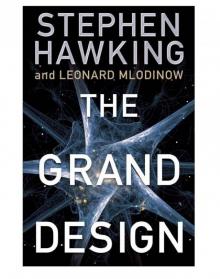 The Grand Design
The Grand Design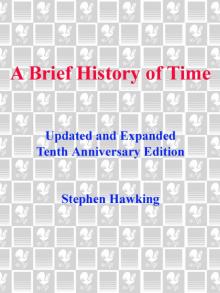 A Brief History of Time
A Brief History of Time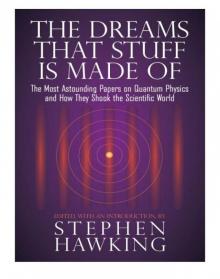 The Dreams That Stuff is Made of
The Dreams That Stuff is Made of My Brief History
My Brief History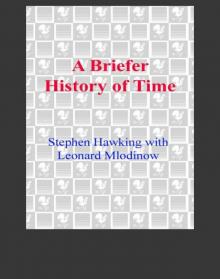 A Briefer History of Time
A Briefer History of Time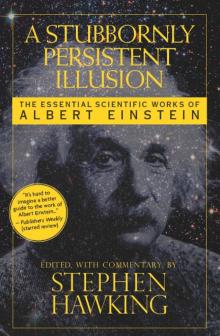 A Stubbornly Persistent Illusion
A Stubbornly Persistent Illusion George and the Blue Moon
George and the Blue Moon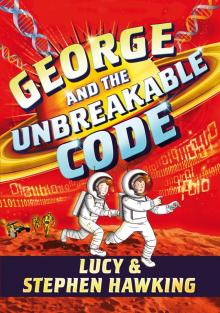 George and the Unbreakable Code
George and the Unbreakable Code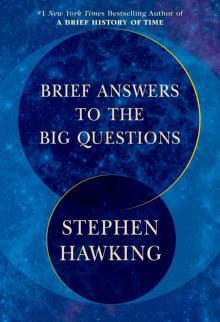 Brief Answers to the Big Questions
Brief Answers to the Big Questions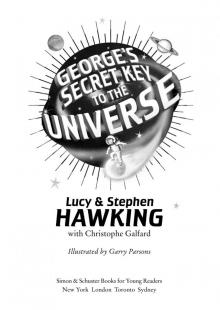 George's Secret Key to the Universe
George's Secret Key to the Universe